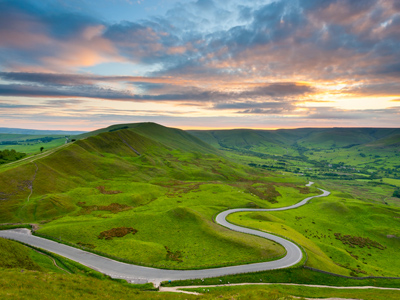This GCSE Geography quiz looks at quarrying in national parks. Building new homes, redevelopment of brownfield sites, civil engineering projects and home owners carrying out DIY creates a high demand for building materials. Many building materials are either quarried directly (e.g. granite, sand and gravel) or made from quarried materials (e.g. cement made from limestone roasted with clay). The problem is that some of these materials are found in or next to some of our national parks which brings industry into conflict with the environment. In your quarrying case study, you will have looked at the impact of quarrying on a national park. Whichever you have studied, the impacts and solutions are the same.
The Yorkshire Dales National Park is an area of great beauty and tourism is an important part of the local economy. Unfortunately, much of the Yorkshire Dales is underlain by limestone, one of the key materials for the construction industry.
As well as being an essential ingredient in cement manufacture, limestone is used in many other applications - making toothpaste, as a bread improver, in paints, paper, rubber, plastics, as a filter material at sewage works ... the list is long. Quarrying of this resource must be carried out. One of the objections to quarrying is that quarries are unsightly and ruin the appearance of the national park.
To overcome this, quarries will often plant belts of trees to disguise the quarry and to maintain the beauty of the national park. When quarrying is finished, the machinery is removed and the quarry is landscaped to help it to blend back in to the surrounding countryside. The problem with both of these solutions is that they take time to mature. In order to try to remove the disturbance from blasting, earth mounds are built around the quarry edges to deflect noise upwards and away from centres of population. To reduce the air pollution from dust, water sprays are used to 'damp down' dust, containing it within the quarry. Lorries leaving the quarry are washed and covered with a tarpaulin to prevent dust being blown into the air as they drive to their destinations.
The Peak District is another national park which contains limestone. There is a large limestone quarry near to the tourist honeypot of Castleton (Hope quarry). This produces large quantities of limestone that are turned into cement at the Hope cement works, which can be seen from miles away. Despite the usual disadvantages such as dust pollution, lots of heavy lorries on the roads in the area, destruction of wildlife habitat, damage to roads from the passage of the heavy lorries and so on, it continues to be worked. It is a major source of employment, providing jobs directly for several hundred people.
Although quarrying is allowed in national parks, it is carefully regulated. Before a new quarry can be opened, or an existing quarry be extended, planning permission must be granted. In many cases, there will be a public inquiry which can take anything from a few months to several years as both sides produce the reasons why or why not quarrying should take place.








